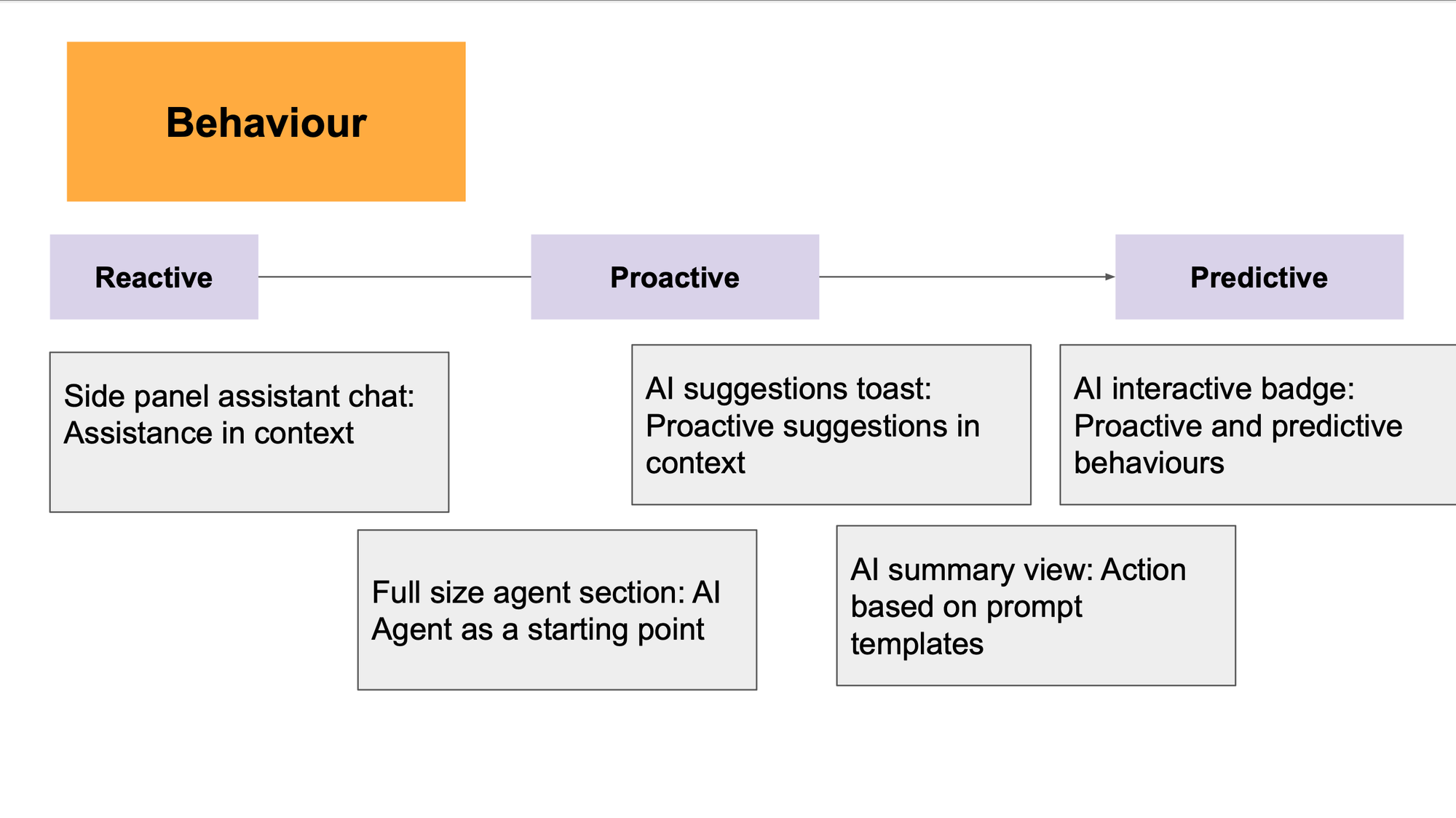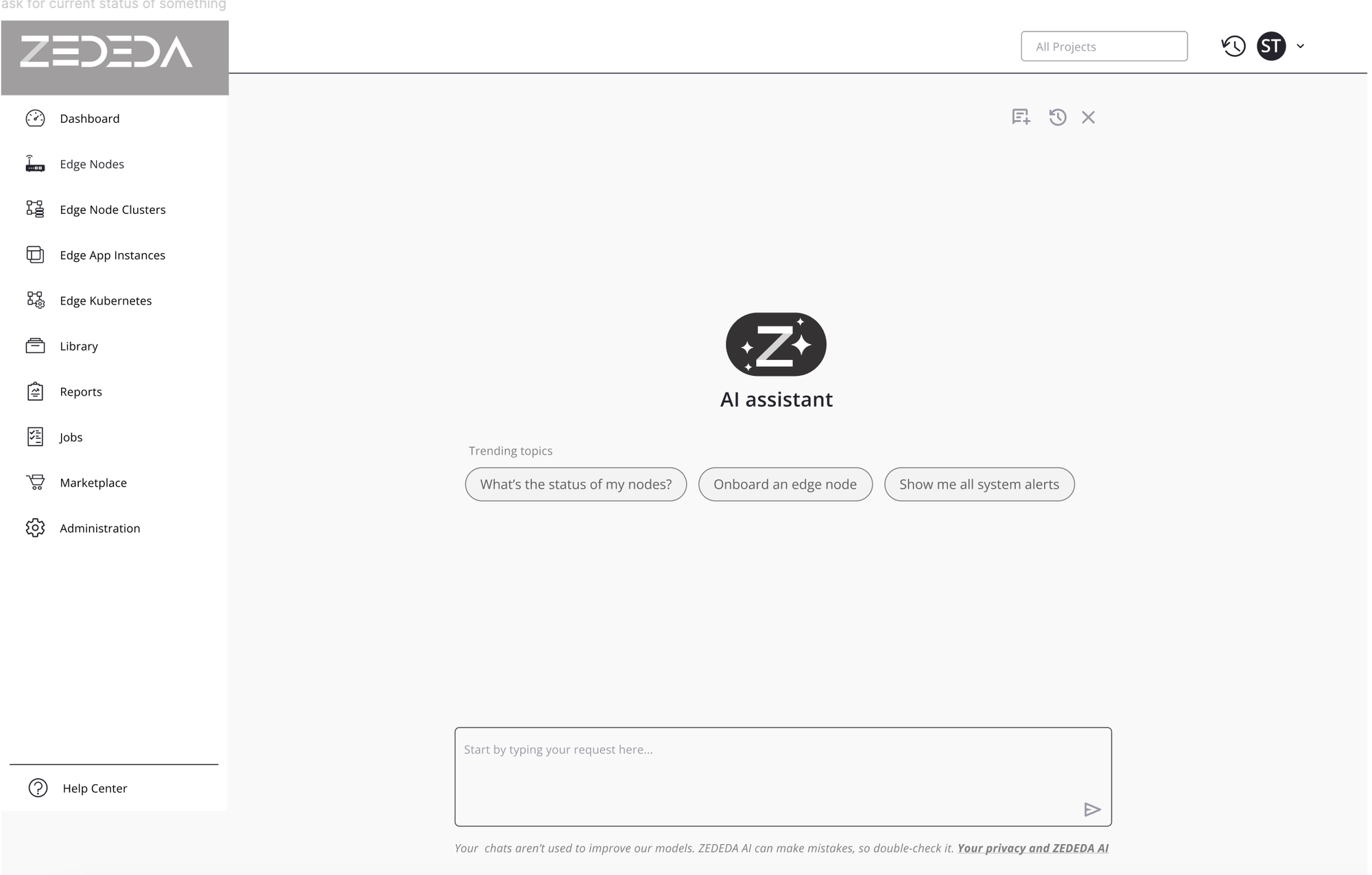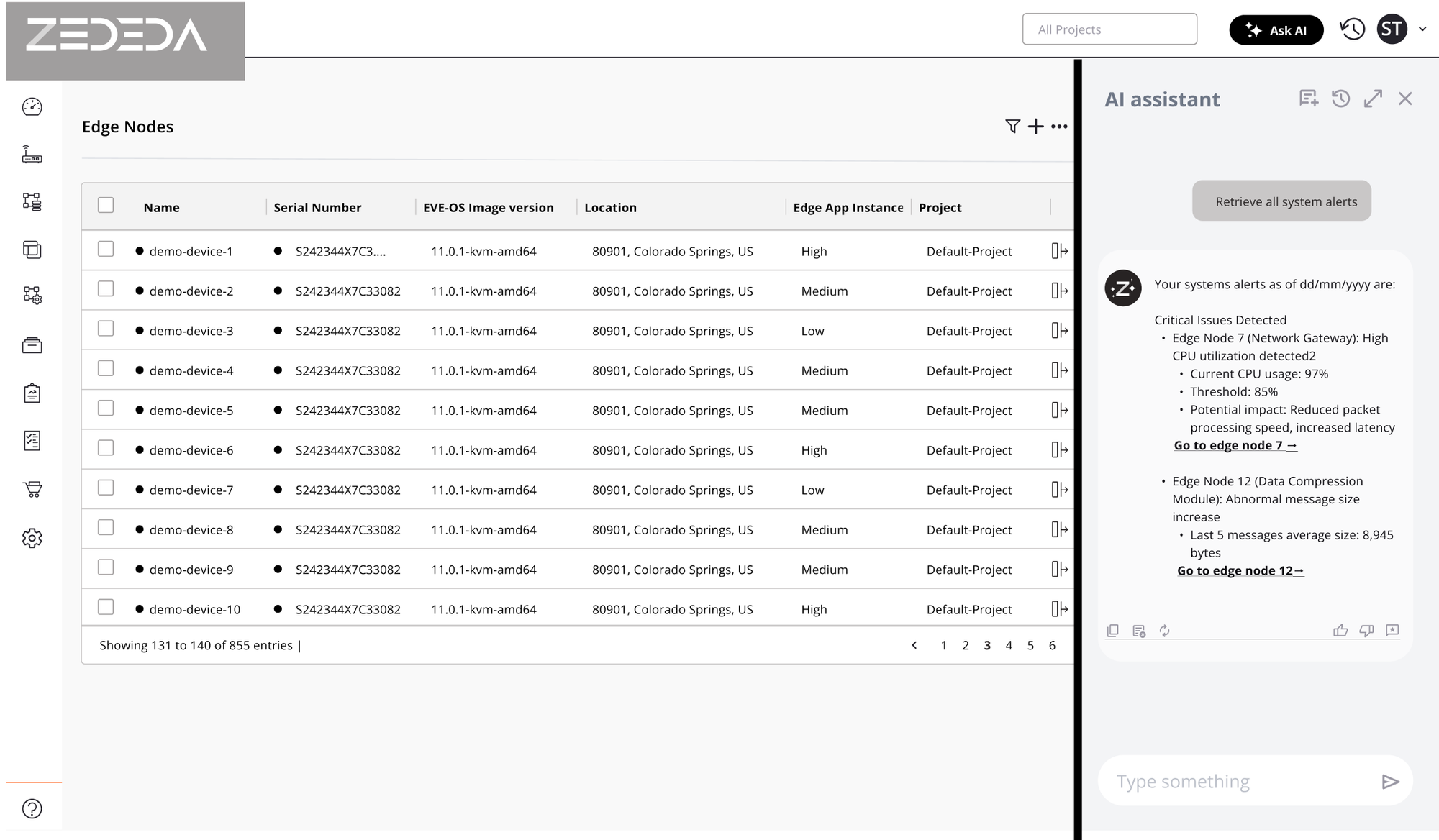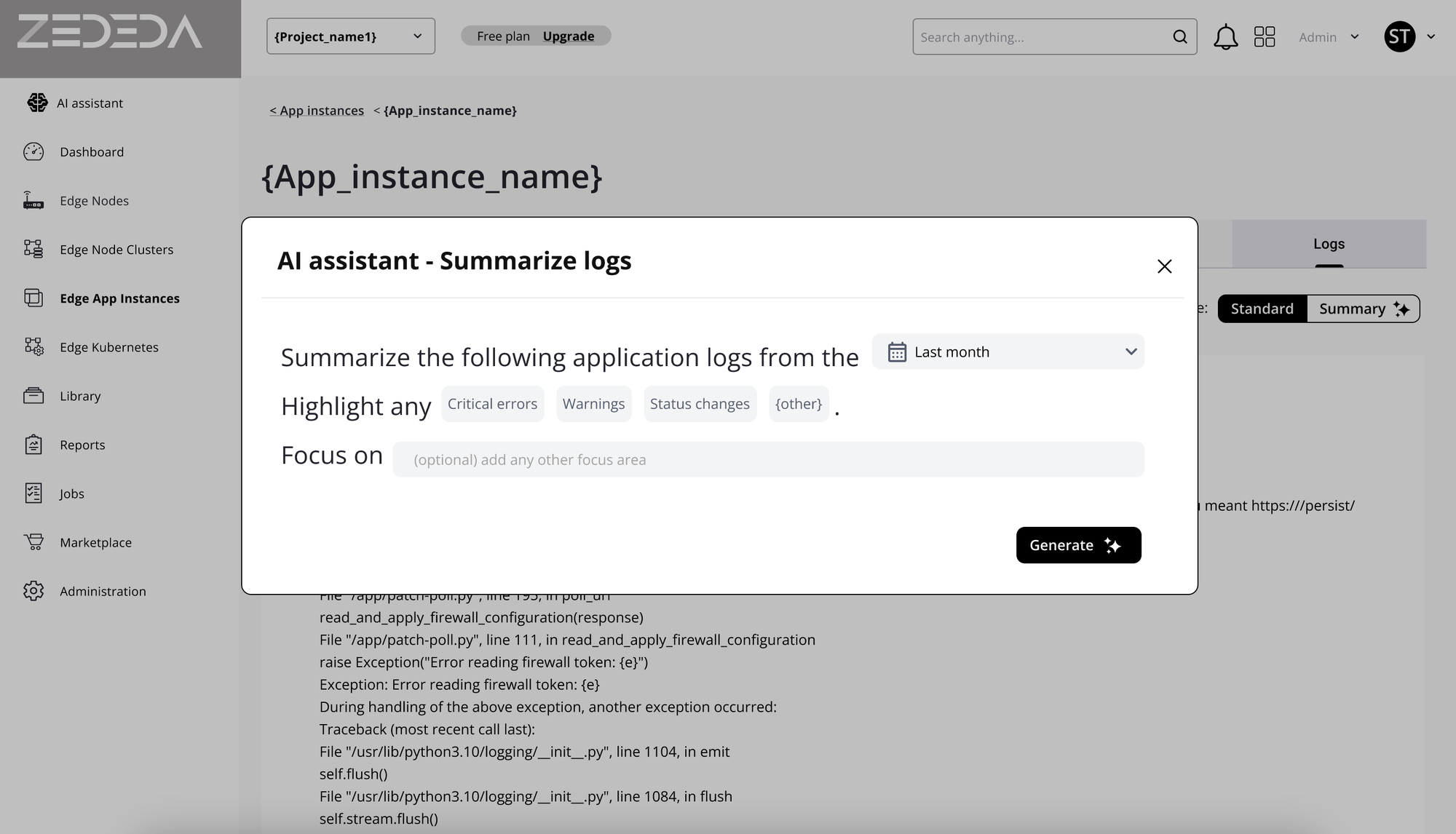AI assistant UX strategy (2025)
AI assistant UX strategy (2025)
Design a user-centric AI agent to streamline and enhance the management and orchestration of edge computing resources, enabling users to perform complex tasks intuitively and efficiently. Enable the user to express their “intent” and the agent acts (whether we have UI built for it or not).

CONTEXT
An AI agent can bridge this gap by automating repetitive tasks, providing actionable insights, and simplifying the orchestration process. With intelligent recommendations and a user-friendly interface, the agent enhances productivity, reduces errors, and ensures smooth operation in even the most demanding edge scenarios.
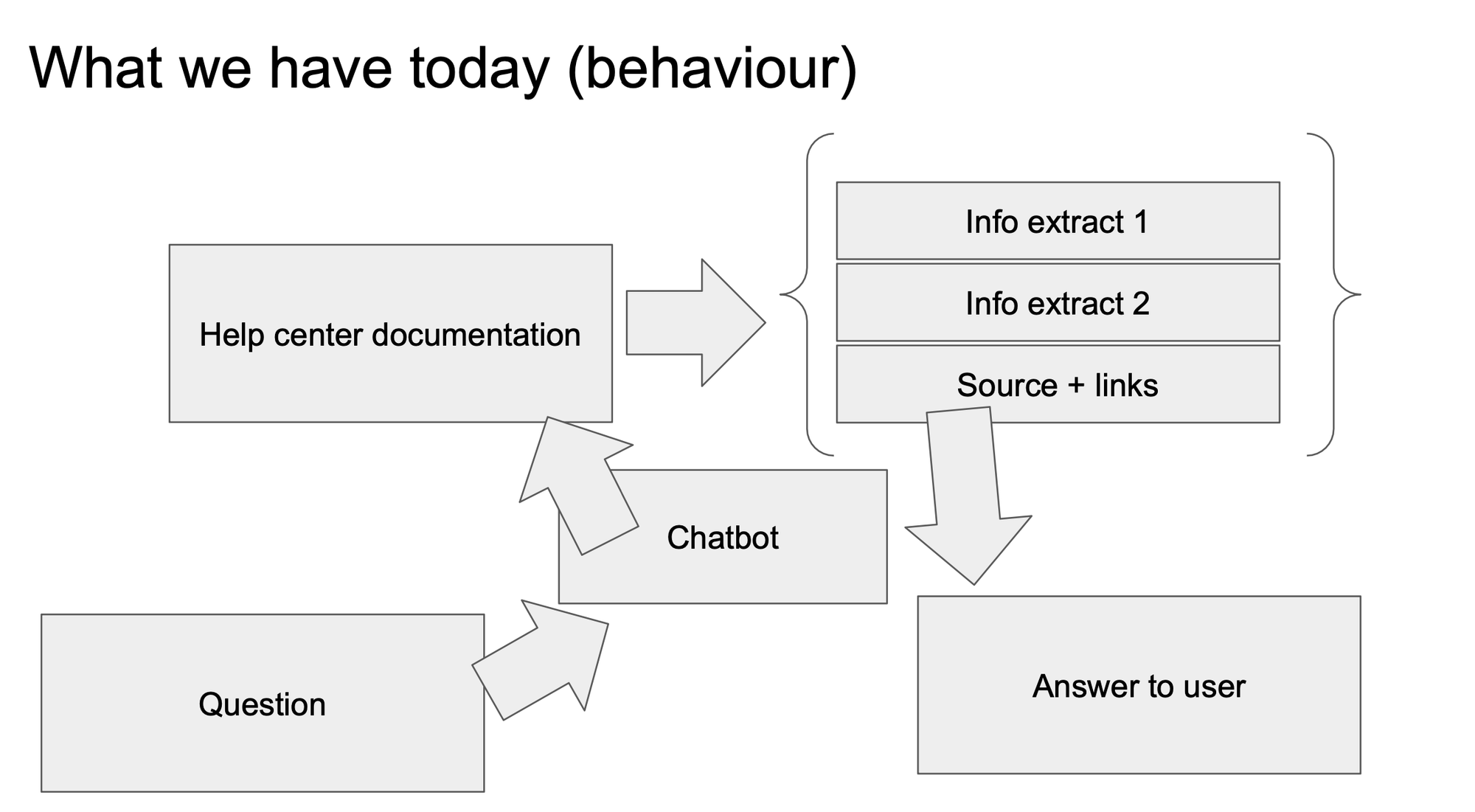
PROBLEM STATEMENT
Design a user-centric AI agent to streamline and enhance the management and orchestration of edge computing resources, enabling users to perform complex tasks intuitively and efficiently. Enable the user to express their “intent,” and the agent performs the action (whether we have UI built for it or not). Additionally, we needed to reduce and eliminate any support tickets associated with how the product functions and simple questions around the product documentation.
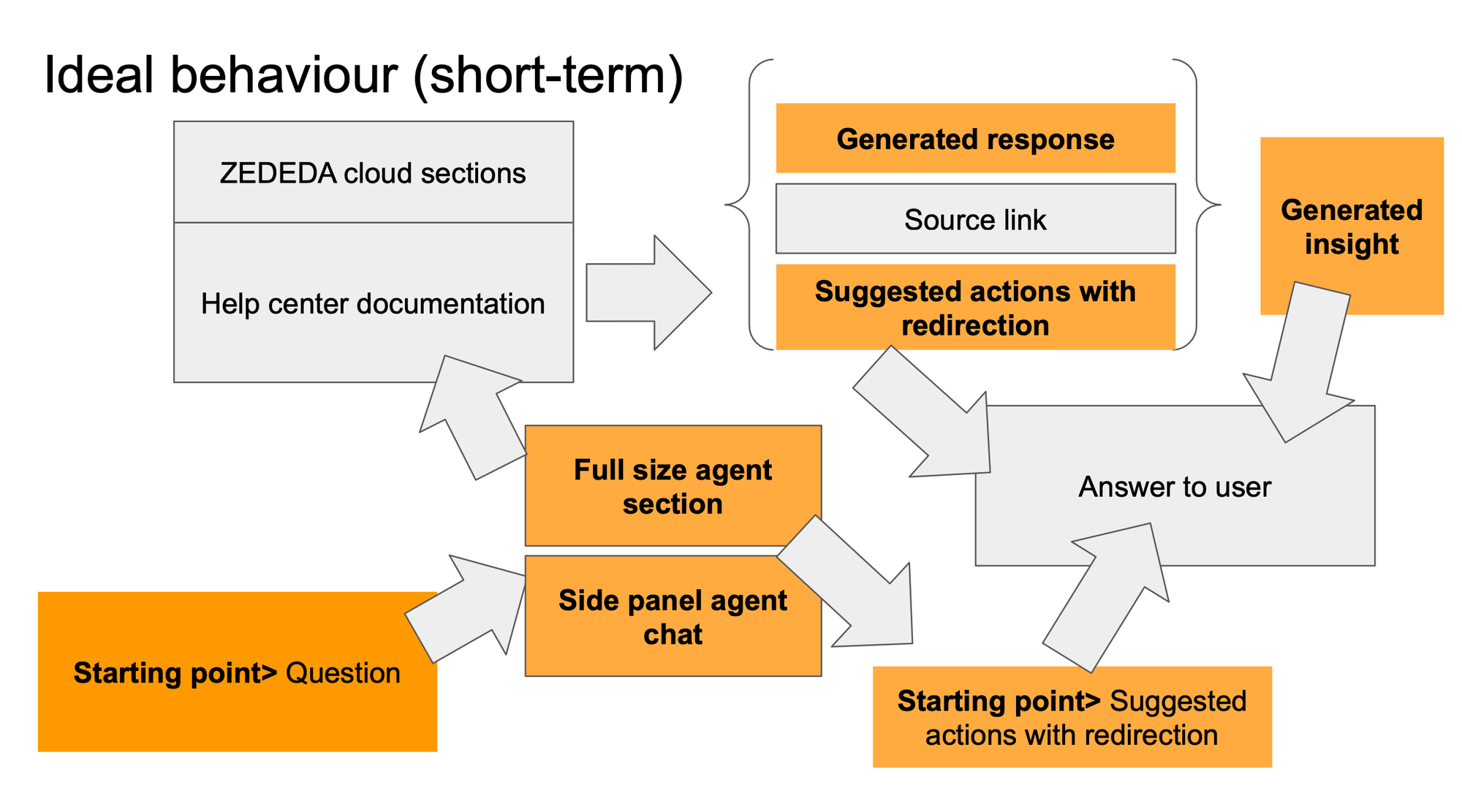
APPROACH
Research Methods: Usability analysis, Heuristics analysis, Ux benchmark, and user flow mapping. Design Process: 1. Research phase to gather quantitative and qualitative information. 2. Information analysis to gather findings and insights to discuss with stakeholders 3. Preparation of the strategy Doc for the implementation phases. 3. Ideation and production of a wireframe prototype. 4. User testing for the concept prototypes and later refinement. 5. Layout of the new user flow to be discussed with stakeholders (business and engineering). 6. Preparation of the deliverables for the UI design. Tools Used: Figma as base tool for compile and analyze information and design the prototypes.

SOLUTION & OUTCOME
AI assistant flows based on the 3 proposed interaction patterns: 1. Reactive: Chat assistant interactions and Smart summary feature. 2. Proactive: Proposed actions on chat assistant and floating bar. 3. Predictive: Insights pannel with alerts.
